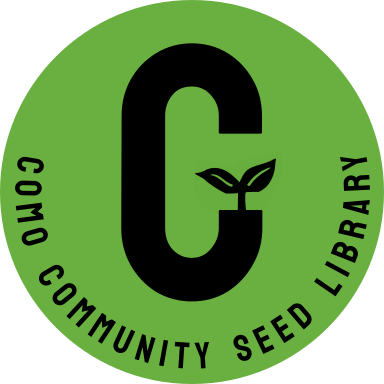Seed to Seed Guide: Onions
Onions (Allium cepa) along with garlic, scallions, leeks, and chives belong to the Allium family, one of the most widespread and popular vegetables used in daily cooking around the world. If anyone ever walks into your house, sniffs, and asks you what smells so good, it’s probably because you are cooking a dish with Alliums in it!
There are two main types of onions; Long-day onions, which need 14 hours or more of sunlight per day and grow into one big bulb, and Short-day onions which are sweeter and milder than their Long-day cousins and often develop into smaller bulbs here in Minnesota.
Fun Fact: The reason onions make your eyes water when you cut them is that when the skin of the bulb is broken, it releases a chemical cocktail of enzymes and sulfenic acid, which combine in the air to create an irritating gas that causes your eyes and nose to run. It’s perfectly harmless, but it does sting! If you are especially affected by onions, a six to ten-dollar pair of lab goggles will protect your eyes from the fumes.
Seed Starting:
Because Onion seedlings are so delicate and easily damaged, rather than transplanting from indoors, it’s best to direct seed them as soon as the ground has thawed enough to be workable and the threat of a long, hard frost has passed; i.e. nighttime temperatures consistently at or above freezing. (32℉/ 0℃)
Prepare the garden bed in a sunny spot in your garden. Onions are root vegetables so make sure the soil is free of rocks, roots, and other obstructions that could stunt or impair healthy development. After ensuring all obstacles are removed, add compost and/or manure to the garden bed, mix thoroughly, and rake into a smooth, even surface.
Mark out rows 12-18 inches apart and scatter your seeds into shallow trenches ¼-½ inches deep (A rake lightly dragged across the surface of the soil will make even and uniform trenches in the soft soil)
Cover the seedings with the surrounding soil(a back of a garden rake works well for this) and water the seeds in. Use a gentle spray or mist if you can, you don’t want to wash away all those carefully planted seeds!
The seedlings will begin sprouting within 7-10 days after planting. Once sprouted, thin them out so that the remaining plants are 3-4 inches apart.
Ongoing Care:
Onions have very shallow roots (usually only an inch to 2 inches deep, if that) and need moist soil in order to grow optimally. You should be watering your onion bed thoroughly at least once a week if it is not raining, and more often as the days get hotter and drier as the dog days of summer approach.
Onion leaves are thin and upright, and you will need to weed them regularly to avoid them being choked out by weeds. Use a hand hoe, rake, or your hands to weed while the onions are still small. Once they begin developing their bulbs, we recommend mulching them with either straw, newspaper, or other organic material.
Your onions are ready to harvest when the bulb has reached the adult size listed on your seed package and the tops begin to flop over and brown. When this occurs, stop watering and let the plants dry out. This will prevent rotting and let the onions start curing in the ground until you are ready to harvest.
When harvesting onions, lift them out by the bulb using either a garden fork or your hands. If you are planning to put your onions in long-term storage, store them in a warm, dry, well-ventilated place for two weeks up to a month or until the paper around the onions is dry and crackly and the neck (the place where the leaves meet the bulb) is hard and tight. Once completely cured, you can either braid the onions to hang in your kitchen or pantry or simply cut the tops off and store them that way.
Seed Saving:
Saving Onion seeds takes a bit of forethought and planning. Not only do you have to isolate different varieties by at least 800 feet to ensure pure seed stock, Onions are a biennial crop, meaning they only flower and set seed every two years. This means that to get seed you have to overwinter your onions in the ground to be able to collect the seeds next summer.
As the weather gets colder, stop watering your onions. This will allow them to dry out and cure a bit so they won’t rot during the long winter.
Before the first frost sets in deeply mulch your onions to ensure they won’t be killed by the drop in temperature. 2 inches is the minimum, but in Minnesota, 5-6 inches would probably be better for insulation. Use straw, dead leaves, grass clippings, old newspapers… whatever you have on hand
Next spring, when the threat of frost has passed, remove the old mulch and lay down new straw or black plastic to prevent weed competition. Resume watering.
Your onions should flower in late summer. Once the flowers are pollinated and the seed heads are dry, gather the seedheads in a paper bag and shake them to free the seeds from the head.
Separate the seeds from the remaining vegetation, and place them in a well-ventilated area to dry completely (2-3 days), before placing the seeds into an envelope labeled with the variety and date collected, place them in a waterproof container, like a mason jar and store in a cool, dry place. In ideal conditions onion seeds can remain viable for 2 years.
Check out these sources from the University of Minnesota and The Seed Savers Exchange for more information:
https://extension.umn.edu/vegetables/growing-onions and
https://www.seedsavers.org/grow-onion
For starting with seeds and saving seeds check out our Youtube channel under growing resources for 2023!
What kinds of Onions are you growing? Share with us on our Instagram or Facebook at Como Community Seed Library!

